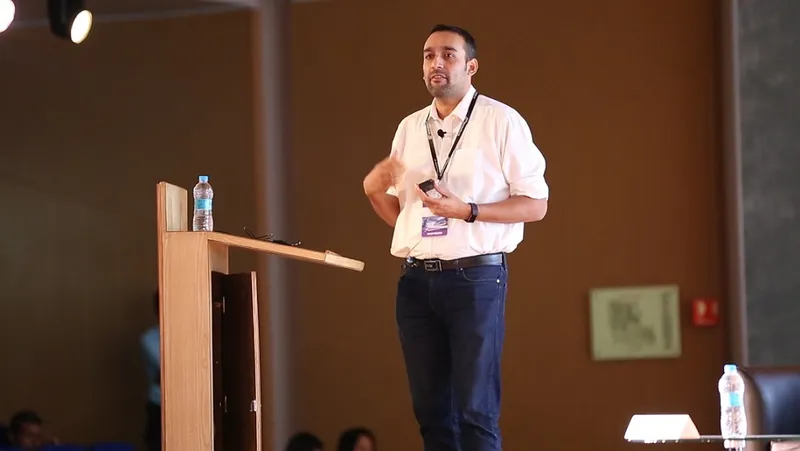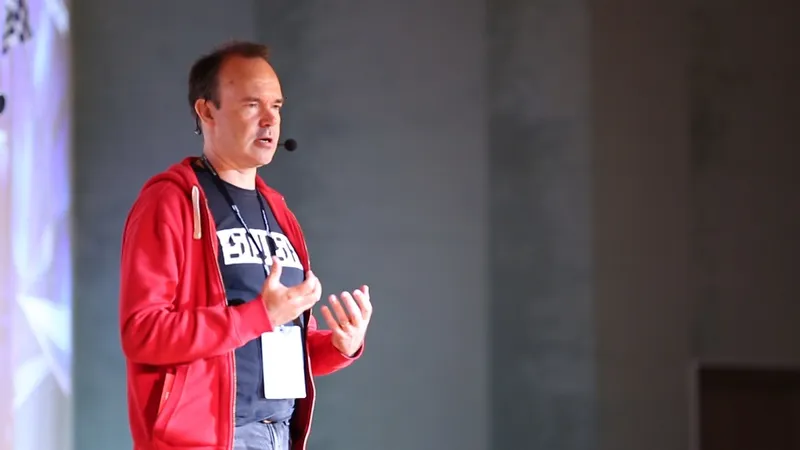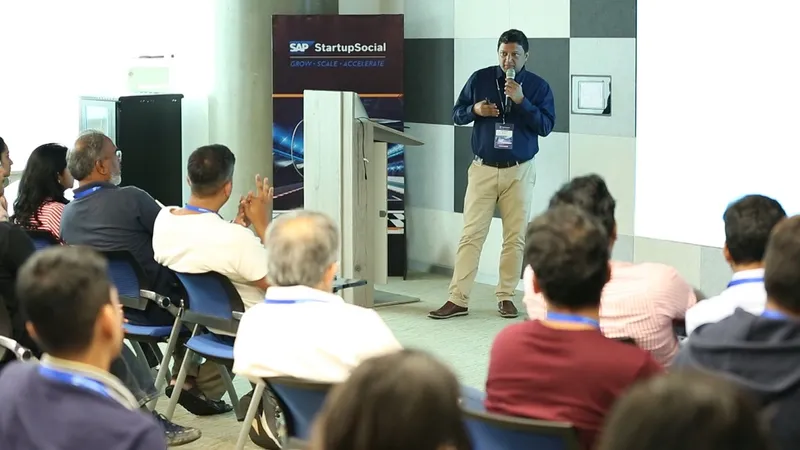Today’s ‘impossible’ is tomorrow’s ‘easy’ – 8 design tips from SAP Startup Social 2018
Vision, frugality, persistence, and focus on local context are key design principles for startups, as explained by a range of speakers at this annual forum.

Designers, developers and startup founders gathered in Bengaluru recently for SAP’s annual Startup Social conference and exhibition, along with a range of investors, corporate executives and policymakers.
The event featured a keynote on design, along with a parallel track organised by SAP Design Talks (see our earlier coverage here). Other upcoming events on design in Bengaluru include Design4India, DesignUp, UX India, and YourStory’s own TechSparks 2018.
Here are eight key takeaways for designers, from the wide-ranging sessions and workshops at this annual conference.
1. Yesterday’s impossible is today’s easy
Mobile interfaces, service design, and entertainment have come a long way from the SMS-era to today’s smartphones, thanks to rapid innovations in digital interfaces, social media, and network bandwidth.
Peter Vesterback, former CEO of Rovio (Angry Birds), regaled the audience with incidents from his business career in the mobile industry when he was told some things were “impossible” or “unnecessary,” but they became easy later and a reality today. These include the rise of the mobile phone in the US (“payphones are everywhere”), the ringtone economy in Austria (“it may work in Finland but never in Austria”), and the spectacular rise of Angry Birds (“100 million downloads is impossible”).
Entrepreneurs and designers therefore need to work not just on today’s platforms but on emerging tools like AR and VR that will become more commonplace tomorrow. As tools and platforms evolve and converge, designers need to be prepared for lifelong learning, up-skilling and cross-skilling.
For example, Urban Ladder is expanding its VR capabilities to develop online stores of unlimited size. AI, ML, blockchain and IoT are other technologies with large potential in the emerging world of voice, video and vernacular in India.
2. Success needs persistence, not just talent
Angry Birds, one of the most successful mobile games of all time, was not an overnight success. The company Rovio began working on mobile multi-player games in 2003, and only six years later, after 51 games, it found success with Angry Birds on December 11, 2009.

User expectations for good design and fast interactions are rising across sectors, and designers must persist in their attempts to meet such cross-industry standards, according to Narendra Ghate, Head of Research in UX and Service Design at Tata Elxsi.
3. Design for product-market fit
One of the most common causes of startup failure is lack of product-market fit, explained Rajib Ghosh, Principal Design Manager, Microsoft India. Other causes are inability to pivot, poor user experience, and lack of user friendliness.
Good product-market fit leads to quick sales, customer testimonials, and press coverage. While early adopters may put up with basic design, the majority of the market wants more usable and impactful products. A human-centred approach to design, powered by empathy, can build strong connects with customers, advised Rajib.
Designers should carefully distinguish between what customers desire, think, communicate, and do. As examples of effective design, Rajib cited Arogya Finance and Big Bazaar; the Product-Market Fit Canvas was also identified as a good tool for designers. “Uncover the root cause. Focus on value proposition and not just features. Test relentlessly and keep iterating,” he advised aspiring designers.
“Relationships are the new product offering,” said Narendra of Tata Elxsi. In a world of proliferating and even bewildering choice, design must help users feel they are in control.
“Human-centric innovation is about unmet and unarticulated needs of customers and end users,” he explained. The role of the future UX designer is to manage runaway expectations, teach users empathy towards technology, and recreate the sense of wonder for technology, Narendra advised.
4. Design is in the brand name as well
Design does not stop with the product or service, but extends all the way to the company’s name and brand. “Angry Birds” is a great name for the game because it makes you wonder why the birds are angry, joked Peter Verstbacka.
In its early days, PayU increased visibility for its brand by flashing its logo between screen downloads, said Jitendra Gupta, MD, PayU. Each of Urban Ladder’s furniture designs has a product story along with the name, explained Rajiv Srivatsa, Co-founder, Urban Ladder.
5. Ask questions about data, don’t just solve problems
Startups and designers should not just be building products for customers, but asking deeper and broader questions about customer tasks, pain points and aspirations. In a world of data deluge, data is not just like oil but like water, according to a panel with speakers from SAP, Asian Paints, Myntra, Tata Technologies, and Freight Tiger.
Data needs to be clear and usable, and a good data strategy can improve productivity or design and also help come up with new business models. Can you design a tyre that speaks? Can you collect data from IoT-enabled smart tyres and offer a new business model of tyre as a mobility service rather than tyre as a commodity?
Intuition and empathy may help with design and business models in early stages, but insights from accurate data are important in scale stage, according to the panellists.
6. Design for the local context
While some principles of design may cut across cultures, there are local variations that also need to be factored in, advised Urban Ladder’s Rajiv Srivatsa. The furniture rental firm focuses on design elements such as simplicity, professionalism, and novelty.
Indian audiences need more elements related to trust, aspiration, authenticity, and longevity of products, he added. In terms of service design, Indian customers expect the provider to assemble the furniture and clear away the packaging. Consumers on slow mobile connections expect faster downloads of product images; they also want furniture that has a blend of modernity and traditional Indian aesthetics, said Rajiv.
He cited Paper Boat’s drinks as a good example of modern packaging drawing on Indian nostalgia. Other trends emerging in India are online browsing coupled with offline buying, which calls for a tight integration of user experience across channels – right down to knowledgeable staff in retail chains.
“Build a brand that the customer can trust and you will be successful,” said PC Mustafa, CEO and Co-founder, IDFresh Food, showing how his company’s dosa and idli batters have been developed at the intersection of innovation, ethics, customers, distribution and technology.
Social entrepreneurs also need to focus on the rural context of their proposed innovations, advised Lakshman PS, Innovation and Design Strategist at SAP Labs India. For example, the water drawing ritual at village wells also serves as an occasion for community communication, which can yield new insights for innovation and services around drinking water.
As examples of effective local design, Lakshman cited Google Maps India’s evolution from pure distance-based to landmark-based navigation, as well as Jaldoot e-Health Point, which provides families in rural villages with clean drinking water, medicines, and tele-medical services.

7. Be frugal
Elements of frugality need to be factored into all aspects of a startup organisation, right from product and process to marketing collaterals and brand name. “We use our own employees as models in our product videos,” joked Urban Ladder’s Rajiv Srivatsa.
Binny Bansal, Co-founder of Flipkart, explained how they spent two to three nights choosing the name of their company – it had to be cool, eight characters long, different from other names, and the cheapest available domain name. Frugality, fast iteration, and the right team are essential success factors for a startup, he advised (see full article here).
8. Think ecosystem, not just centre of excellence
It is important for cities and regions to build inter-connected communities of designers. This includes companies, universities, startups and civil society, for broad-based awareness and appreciation of design.
It is popular for companies to set up centres of competency or excellence, but a better approach may be to set up on open platform like a bazaar, suggested Peter Vesterbacka. He had earlier set up the HP Bazaar as a branded community for startups to engage with HP. Helsinki was also the launchpad for the global meetup movement for mobile startups, called MobileMonday.
Regional ecosystems take decades to build, said Peter; Silicon Valley’s foundations were laid way back in the 1930s. Industrial and sectoral ecosystems also take long to build or transform; the education sector in countries like India can adapt to elements of the Finnish system, which is the focus of Peter’s next startup.
All the schools in Finland are excellent; the best school is the nearest school, he joked. “Learning how to learn is one of the most important skills across disciplines,” he said.
The road ahead
The speakers at the conference generally agreed that the startup and design ecosystem in India is slowly maturing, with a call for more community networking and engagement with the broader ecosystem. Better industry-academia partnerships are needed; Germany is exemplary in such collaboration, according to Margit Hellwig-Botte, Consul General at the German Consulate in Bengaluru.
Wrapping up the panel on ‘Vibrant Ecosystems,’ Ravi Gururaj, President of TiE Bangalore, said the components of ideas, talent, investment, and government support are coming together in a favourable manner. “This is a fantastic time to be an entrepreneur in India,” he said. The panel also focused on the challenges of sustainability and urban planning at scale, with the backdrop of Bengaluru’s notorious traffic jams and pollution.
In sum, you can succeed in the innovation journey if you can walk on water, joked Peter Vesterbacka; after all, in Finland’s winters, all the lakes are frozen and you can indeed walk on water!







